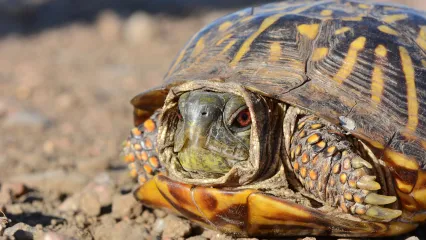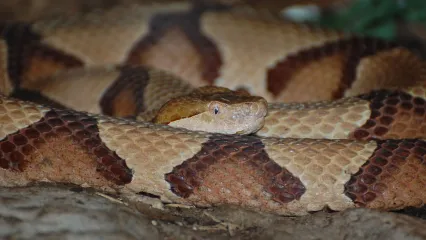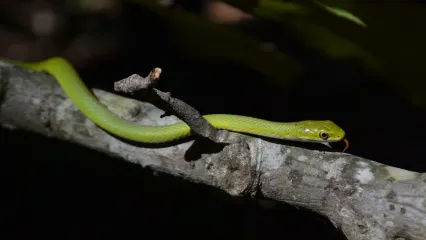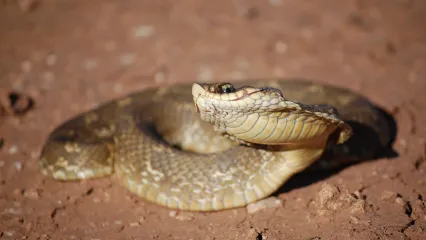
Description
The ornate box turtle is one of two truly terrestrial turtles in Oklahoma. The other is the three-toed or eastern box turtle. The ornate box turtle can be easily distinguished from all other turtles in the region by a combination of its high-domed shell, bright yellow lines on scutes of the carapace and plastron, non-webbed hind feet, and a plastron that is hinged at both ends. Although some individual three-toed box turtles can have an ornate pattern on the carapace, they do not have that pattern on the plastron (lower shell). When disturbed, ornate box turtles often completely close the shell. Adult males can be easily distinguished from females by their red eyes (brown or yellow in females) and their concave plastron (flat in females).
Ornate box turtles are not considered species of greatest conservation need by the state of Oklahoma. They can be locally common, and their greatest threat is mortality on highways and illegal harvest. By paying close attention to animals on roads, Oklahoma residents can easily reduce mortality of ornate box turtles on the highways. Collection of box turtles (both Terrapene carolina and Terrapene ornata) for commercial purposes is against the law. Because of their life history (long time to reach sexual maturity and repeated reproduction over a long lifetime with high nest and juvenile mortality), harvest of adult females can have highly detrimental effects on populations.
Size
Adults reach up to five inches in carapace length. Recently hatched juveniles are just over an inch in plastron length.
Habitat
Ornate box turtles occur throughout Oklahoma, but are most common in the relatively open western counties. Their North American distribution extends west to east from southeastern Arizona to southern Illinois and north to south from southern South Dakota into Mexico.
Life Cycle
Like other turtles, ornate box turtles are late-maturing and long-lived. They deposit eggs in nests in the ground that are dug by the female. Eggs hatch from late July through August, depending on temperature and rainfall. Similar to many other turtles, ornate box turtles have temperature-dependent sex determination, that is, temperature of the nest during development determines sex of offspring. Ornate box turtles feed on a variety of insects, carrion, and plant material, especially fruits.
How To Observe
These turtles can most easily be observed in late spring and early–mid summer in the morning following rainstorms. Driving roads is the easiest way to find one, but they can be found while hiking as well. They can be easily photographed if not disturbed, but once they close the shell, the likelihood that they will expose enough of the body for a good photograph is low.
(This profile was created by Dr. Laurie Vitt as part of a partnership between the Wildlife Department and the Sam Noble Oklahoma Museum of Natural History. It was funded as part of a larger State Wildlife Grant to survey and inventory amphibians and reptiles of the Wildlife Management Areas of Oklahoma: T-35-P-1.)


